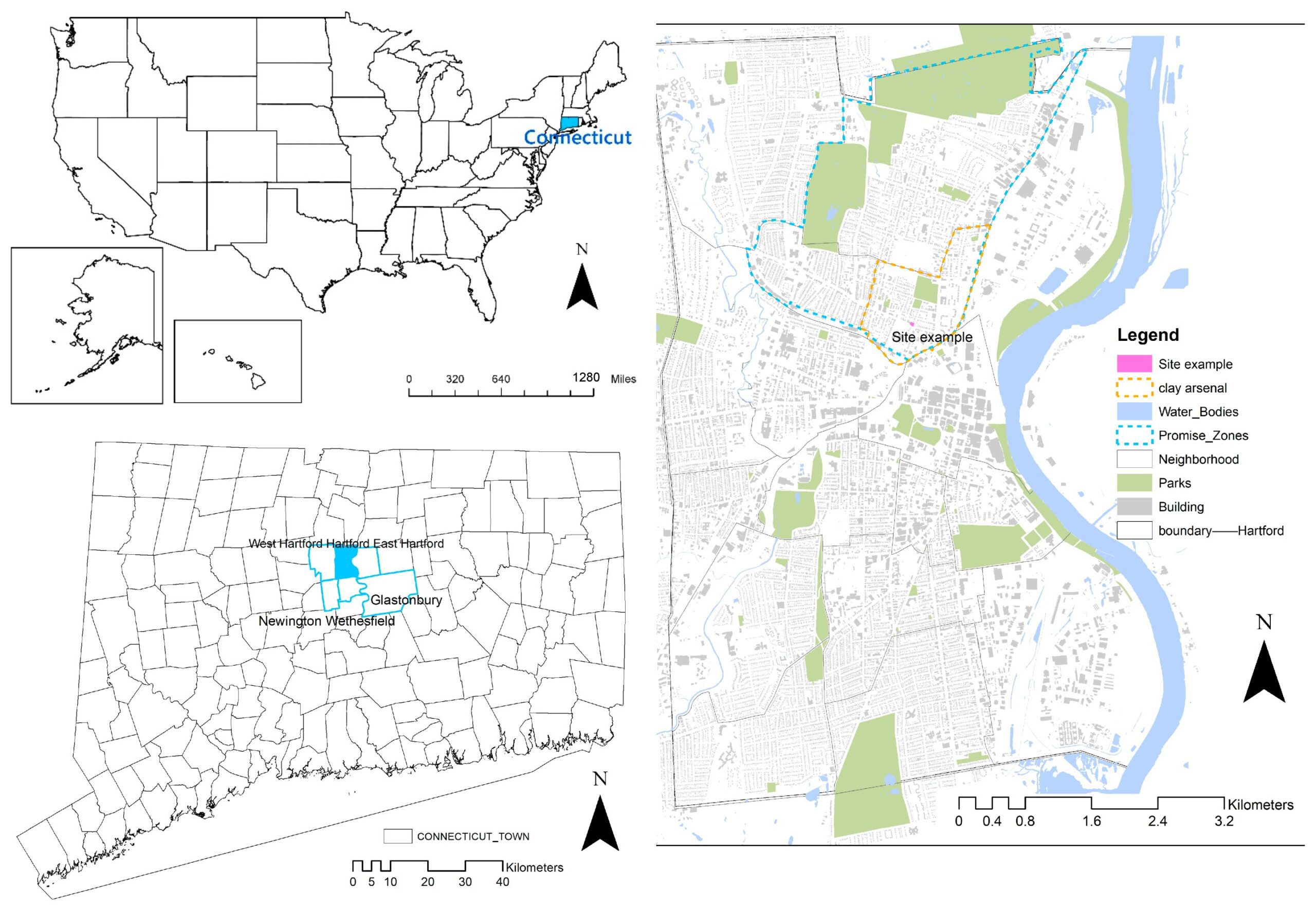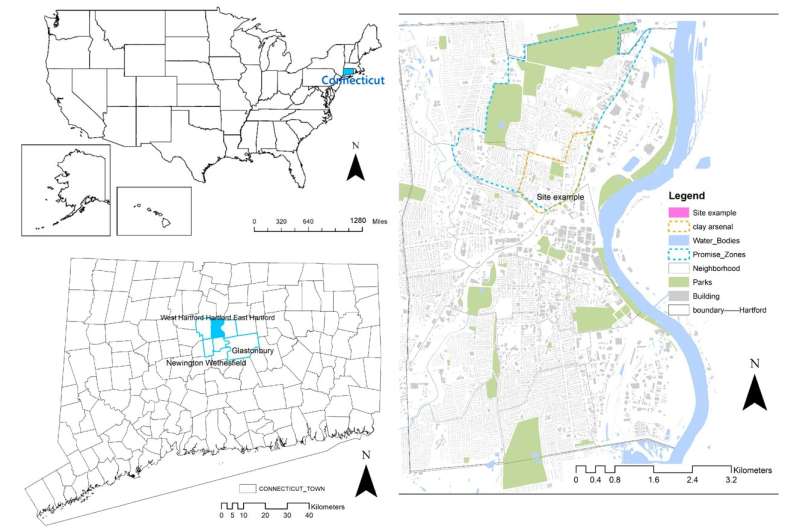

Vacant lots, though overlooked or seen as eyesores by many, represent opportunities.
UConn College of Agriculture, Health and Natural Resources doctoral researcher Pan Zhang and Assistant Professor Sohyun Park, both in the Department of Plant Science and Landscape Architecture, have created a framework to help cities and community members assess and prioritize which lots will have the biggest impact—for everyone—if they are repurposed. Their research is published in the journal Sustainability.
Due to rapid deindustrialization and white flight, Hartford is home to some of the poorest neighborhoods in the country, and areas of North Hartford were designed as an urban renewal Promise Zone in 2008. Zhang explains the project started in 2018 as part of a class project with retired Associate Professor Kristin Schwab.
The class she was taking was tasked by the planners from the City of Hartford blight remediation team along with community stakeholders to evaluate and assess city-owned vacant lots. The city wanted to have a framework to systematically manage the lots and potentially pick sites that were expected to be most suitable, and successful, for regeneration and placemaking purposes. Zhang partnered with Park to continue developing the framework after the semester.
Urban greening efforts are underway in other post-industrial cities, like Detroit and Cleveland, but Park says these efforts tend to be driven by single goals, either economic or environmental. The researchers wanted to create a comprehensive framework that could accomplish many goals, and that is how they created the Vacant Land Assessment System (VLAS).
These kinds of projects face several challenges, such as zoning restrictions, potential remediation of brownfield sites, ensuring the projects address community needs and avoid gentrification, as well as how to reach consensus on the reuse programs if lands were privately owned.
“First, the city gave us a spreadsheet with all the street addresses of their properties and when we started to geocode the inventory, we realized there were spatial patterns that were categorizable,” says Zhang.
Using publicly available information and geographic information systems (ArcGIS) tools they analyzed features of the properties, geographical distribution, and potential strategies for reclaiming the vacant lots. The researchers analyzed the characteristics of the lots based on their proximity to different facilities, infrastructure, schools, and parks, for example, to assess future reuse opportunities.
They organized the properties into four types, or typologies, and categorized them as Row House, Street Corner, Commercial/Industrial, and Main Street. Then reuse programs were designed for each category to create some generalized strategies.
“After that, we consulted with the city about which sites to work on in North Hartford. Then we worked with the planners, neighborhood NGOs, and stakeholders to try to apply those sustainable placemaking strategies. We got good feedback and reactions from the public when we presented the final design outcomes,” says Zhang.
Zhang says the VLAS framework leverages existing spatial data and resources so the tools can be easily used by other planners in any municipality and can help with planning and managing spaces from site to neighborhood to city scales and can also serve as an assessment tool. Another essential quality of the framework is that it links scientific expertise with policymakers and community stakeholders to create a collaborative working environment.
Though the project implementing the VLAS framework has not gone forward yet, Zhang hopes that it will one day,
“I continued to work in that neighborhood the summer after that project and residents still remember me and that project. It is something the residents were looking forward to.”
Zhang feels the approach could have lasting ecological impacts as more greening lots could not only increase access to green spaces but also increase connectivity with forests in and around cities.
“We want to greenify those lands that have been disregarded and underestimated in the city setting. The existing native trees in those vacant lots might have more potential than people think,” says Park.
“They might be good for local ecosystems, even though that’s not an intact ecosystem, but rather what’s called a novel ecosystem where urban wildlife can thrive. Also, actively greenifying those lands helps the community’s health and well-being in the long term and may be able to help break the cycle of poverty, and violence that is prevalent in those areas.
“Even though this is a small case study, when we can scale up these practices to a broader level, we might be touching upon some societal problems that we have. There might be some implications that we can draw from this research.”
By using the holistic approach and multi-scale thinking of VLSA, greening vacant lots could be for the common benefit of all. Park stresses that community engagement is key.
“Even though this is a research-based, data-driven study, all things that could happen should be involved with members who live in that neighborhood. I think connections from the research to community engagement and participation should be key to making things happen.”
More information:
Pan Zhang et al, VLAS: Vacant Land Assessment System for Urban Renewal and Greenspace Planning in Legacy Cities, Sustainability (2023). DOI: 10.3390/su15129525
Provided by
University of Connecticut
Citation:
Researchers develop holistic tool to help plan urban vacant lots (2023, September 6)
retrieved 7 September 2023
from https://phys.org/news/2023-09-holistic-tool-urban-vacant-lots.html
This document is subject to copyright. Apart from any fair dealing for the purpose of private study or research, no
part may be reproduced without the written permission. The content is provided for information purposes only.